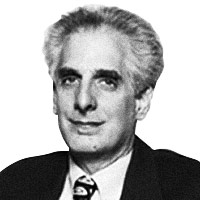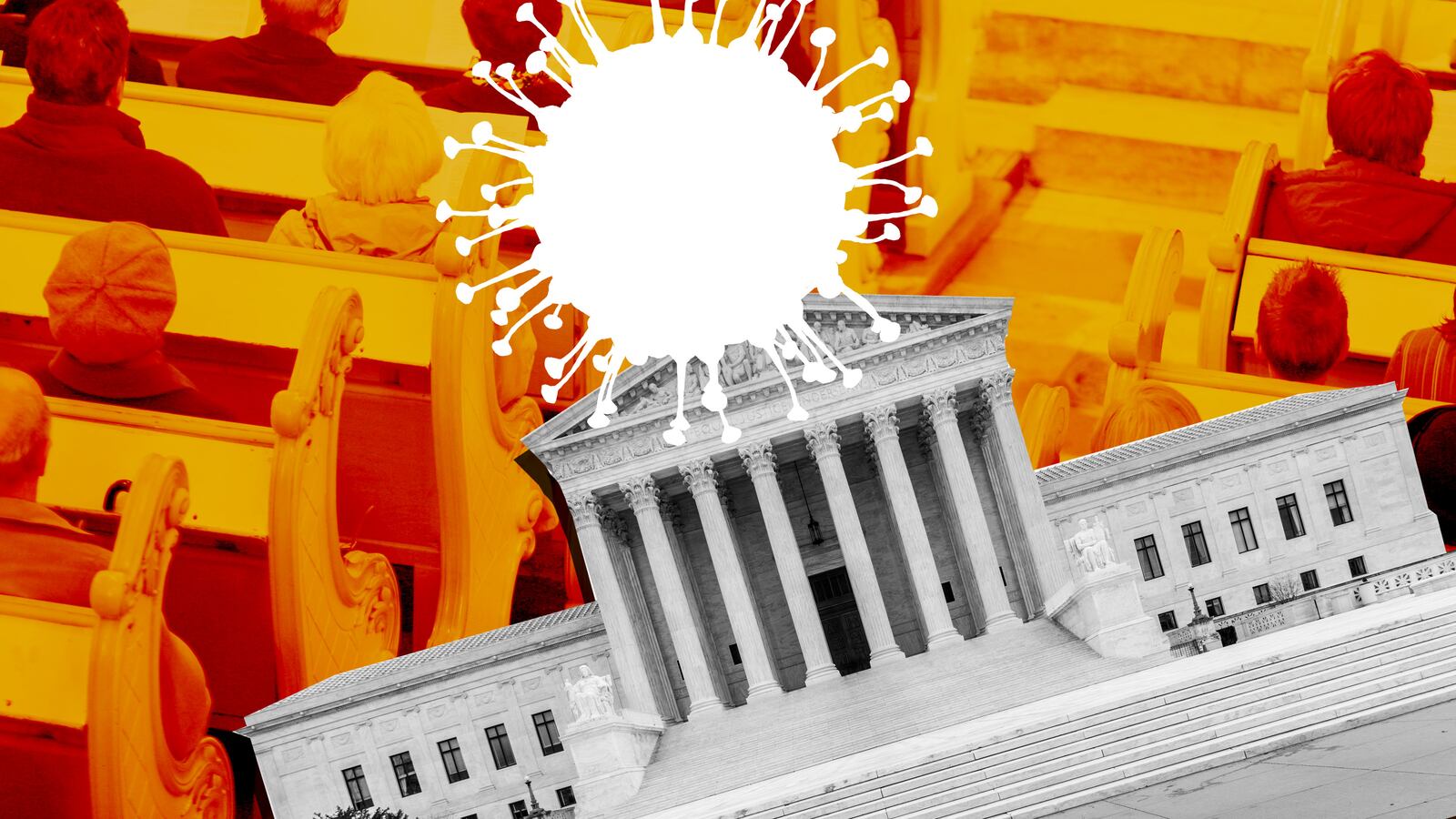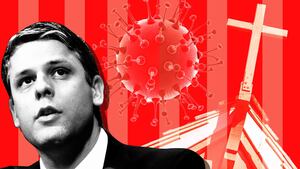Five Justices of the United States Supreme Court just declared war on science by overriding the judgment of New York State’s governor and health-care professionals and nullifying emergency limitations on in-person religious worship in New York City areas most heavily impacted by the COVID-19 pandemic—doing so just as the city is on the precipice of another uncontrollable public health disaster. This astoundingly reckless action by the new reactionary court majority established with the appointment of Amy Coney Barret amounts to an opening salvo in what is certain to be an ongoing judicial campaign against scientifically informed government officials the justices believe have been targeting “traditional” religion.
Earlier this year, a five-justice majority, comprised of the Supreme Court’s then four relatively liberal Justices (including the late Ruth Bader Ginsburg) and Chief Justice Roberts, rejected applications to void two similar pandemic-related regulations of indoor worship services as violative of the First Amendment’s free exercise clause. As Roberts explained, the court has long reasoned that the “Constitution principally entrusts ‘[t]he safety and health of the people’ to the politically accountable officials of the states," who should generally not be “subject to second-guessing by an ‘unelected federal judiciary,’ which lacks the background, competence, and expertise to assess public health and is not accountable to the people.”
But the court’s most reactionary justices bristled at the idea that they should defer to the public health decisions of elected officials, even—indeed, especially—if those decisions are based on the advice of medical and scientific professionals. This is because they and others on the far right believe that scientific institutions, and largely Democratic public officials, are engaged in a massive scheme to undermine “traditional” religion and that the court must intervene as the protector of the faithful. With Barrett joining the court, the newly empowered radical reactionaries have shifted to playing offense.
Attorney General William Barr has repeatedly asserted that “militant secularists” have set out “to drive religion from the public square and to exclude religious people from bringing a religious perspective to bear on conversations about the common good.” In response to this supposed war on religion, the DOJ has spent the last year advancing court challenges to numerous COVID-related restrictions on in-person worship on the grounds that they were deliberately targeted by, and unnecessarily burdened, religious institutions, even when such restrictions were entirely consistent with CDC guidance.
Barr’s claim that there is a brewing civil war between “secularists” and “people of faith” has found an avid audience on the Supreme Court. In a recent speech before the Federalist Society, Justice Samuel Alito attacked the court’s historic deference to the judgment of public officials, particularly those implementing the recommendations of scientific and medical experts. According to Alito, the nation has been afflicted by a government that has “become more scientific.”
One might think that looking to medical and scientific experts when, for example, determining what steps to take in response to a deadly pandemic would be a good thing. But in Alito’s account, reliance on the judgment of scientific and medical professionals is pernicious because science and reason have become mere tools in the service of a war against “traditional views” and religious institutions.
According to Alito, under the deceptive cover of science and reason, enemies of religion have engaged in “unrelenting attack[s]” on, for example, a religious institution that sought to bar its employees from receiving insurance coverage for contraception, a pharmacy that declined to stock the morning after pill, and a bakery that refused to provide services to a same-gender couple, and, currently, people who wish to gather together in prayer in conditions that could lead to their own deaths and those of anyone else they then come into contact with.
On Alito’s account, the dangerous “movement toward rule by experts” has expanded during the pandemic as courts have allowed scientists to advance their war against religion in the name of preserving public health, including by limiting indoor religious services (which epidemiologists have concluded are among the most significant sites of Coronavirus transmission).
Alito contends that judges, who have deferred to such rules on the long accepted ground that elected officials have the primary responsibility to safeguard the public health, have effectively been duped into allowing wholesale breaches of the Constitution’s protections of religious practice. The unmistakable implication of Alito’s reasoning is that science is to be distrusted, and presumed to be a mere instrumental tool of the secularist onslaught; thus judicial intervention is now required to protect the faithful.
And that is just what the court did last month.
After New York City became an epicenter of the coronavirus pandemic in March, the governor, in close consultation with public health professionals, implemented a series of steps that successfully tamed the virus for a number of months. Those limitations are strictest in areas denominated as “orange” and “red” zones, where infection rates have reached dangerous levels. In addition to restrictions on other high risk facilities, like nail salons and bars, houses of worship were limited to the lower of 25 percent of maximum capacity or 10 people in red zones, and 33 percent of maximum capacity or 25 people in orange zones.
The Archdiocese of Brooklyn and an association of ultra-Orthodox synagogues brought suit, after certain of their houses of worship fell within the ambit of these temporary emergency measures, asserting that they amounted to an unconstitutional interference with the free exercise of religion. After an extensive inquiry, however, a trial judge found there was absolutely no evidence that New York’s governor or its health department imposed these rules out of an antagonism to religion. To the contrary, the restrictions imposed on houses of worship, like each of the other strict limits New York has imposed, were solely the product of informed, science-based judgements rendered in a time of grave emergency. Indeed, rather than disfavoring houses of worship, the rules actually favored them, given that other like venues (such as theaters) largely have been shut down entirely.
Furthermore, while the strict limits imposed in red and orange zones are, in the words of Governor Cuomo, “blunt,” they have also worked. By the time the case got to the Supreme Court, the restrictions had actually been lifted because positivity rates had declined in the areas at issue. Nonetheless, after losing in the lower courts, the religious institutions continued to press their case, and found a receptive audience in the Supreme Court’s new extremist majority, which issued a ruling barring enforcement.
The court majority’s unsigned “per curiam” majority opinion, likely authored by Barrett, used relatively anodyne language; yet it made a startling claim, suggesting, without any evidence whatsoever, that Cuomo harbors anti-Semitic prejudice, and deliberately “gerrymandered” the zones to target certain synagogues (although the opinion did not go so far as to assert that the governor, a Catholic, is also a secret anti-papist).
But it was the separate opinion of Justice Gorsuch which provided the most fulsome, and disturbing, explanation of the majority’s rationale. Echoing Alito’s recent speech, Gorsuch contended that the "State has effectively sought to ban all traditional forms of worship in affected 'zones' whenever the Governor decrees and for so long as he chooses.” Gorsuch was particularly taken with the claim that New York treated liquor stores more solicitously than churches, stating that New York officials had determined that it was “unsafe to go to church, but it is always fine to pick up another bottle of wine." Furthermore, Gorsuch stated, “the problem [is not] an isolated one. In recent months, certain other Governors have issued similar edicts. At the flick of a pen, they have asserted the right to privilege restaurants, marijuana dispensaries, and casinos over churches, mosques, and temples.”
As dissenting Justice Sonya Sotomayor pointed out, the record actually established that New York’s regulations were fully grounded in scientific and medical judgments, and the comparison of hours-long church services to visits to liquor stores was facile in the extreme, and scientifically meritless. But Gorsuch would have none of it, making plain his view that the governor was deploying science and epidemiology as a cover for what amounts to a war against religion, stating that the “only explanation for treating religious places differently seems to be a judgement that what happens there just isn't as 'essential' as what happens in secular spaces."
Thus, like Alito, Gorsuch vociferously rejected Justice Roberts’ contention that courts should be hesitant to second guess the scientifically informed public health judgments of elected officials at a time of unprecedented emergency and widespread death. Gorsuch declared that courts "may not shelter in place when the Constitution is under attack," and suggested that secularists operating under the banner of science should no longer be permitted to take advantage of “judicial modesty” to expand their battle against the faithful.
In the immediate wake of the Supreme Court decision, however, Pope Francis published an op-ed that seemed to point a finger of admonishment at leaders of his own church in Brooklyn. The pope expressed his exasperation at those who claim that “measures that governments must impose for the good of their people constitute some kind of political assault on autonomy or personal freedom!,” and went on to say that “[i]t is all too easy for some to take an idea—in this case, for example, personal freedom—and turn it into an ideology, creating a prism through which they judge everything.”
NIH Director Francis Collins, a devout Christian, likewise argues that compliance with public health measures is actually an expression of religious values, explaining: “You're doing the altruistic, loving thing of saying, 'I'm going to protect people from me.' And that's a Christian action if ever I've heard one."
But while most of the members of the court’s right-wing majority are current or former Catholics, it seems unlikely that they will be swayed by the pontiff’s call to leave public health decisions to scientifically informed government officials, let alone by Collins’ view that science is not opposed to religion. To the contrary, they have unmistakably signaled a willingness to second guess scientific and medical judgments in the midst of a raging pandemic, believing that waging the battle against secularism merits judicial skepticism of, and challenges to, science, even at a time of grave health emergency.
Furthermore, the same justices who chose to void New York’s public health rules also regularly rail against the growing power of what they call the “administrative state;” and there is every reason to believe that their actions directed as much at weakening the power and authority of Democratic governors (and soon a president) to address the pandemic, as they are at protecting the rights of the faithful.
Thus, while many Americans express hope at the prospect that federal government officials will “align... themselves more with science” during a Biden administration, it seems likely that Alito and his colleagues will view that alignment with grave suspicion. Indeed, even as the country is relying on public health professionals to lead our nation’s war against a deadly virus, a majority of the members of the Supreme Court seem more intent on conducting their own holy war on science and reason.








